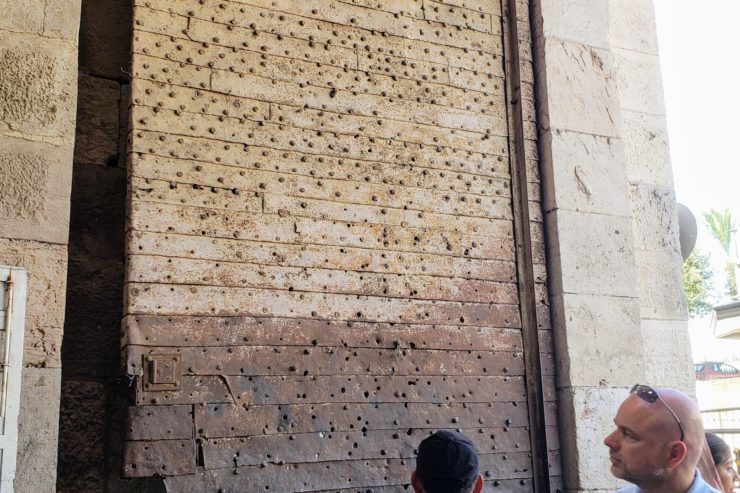The Old City of Jerusalem is walled in. Here you’ll find an introduction to the various ‘gates’ whereby you can enter the city.
Jaffa Gate seems to be the busiest of all the gates – perhaps because outside it is one of the main arterial routes into the city with bus stops just below the gate so it’s easy to get to on public transport. It is one of the closest gates to the downtown area of modern Jerusalem too. Pictured below is the L shaped gate for pedestrians, but on the other side of this is a road where traffic can enter also. The road entry was created (i.e by breaking down the wall) to accommodate the German emperor Kaiser Wilhelm II ‘s entry into the city in 1898 and now is a handy entry point for vehicles that need access to the Old City from the West.
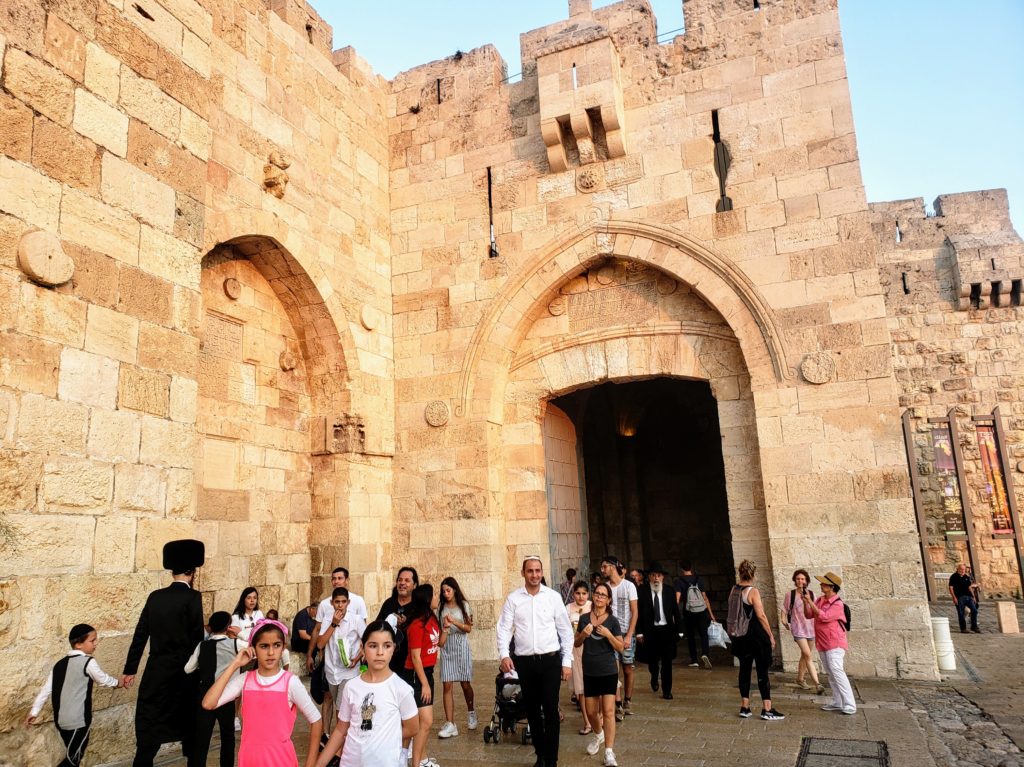
Jaffa Gate was built during the Ottoman reign, in 1538. You can see the Arabic inscriptions which praise Allah and his servant Abraham, from when the gate was dedicated. Entering through this gate you can easily get to the Christian quarter (turn left), the Armenian Quarter (turn right) or the Muslim Quarter (straight ahead).
We sat people watching near Jaffa gate for about half an hour one day. It was so interesting watching locals and tourists walking, young and old on e bikes, orthodox jews with their heads in prayer books – their lips mumbling as their legs strode quickly on (they always seemed so purposeful!), school kids meandering home and a few cars negotiating all of the above spilling out on to the narrow streets.
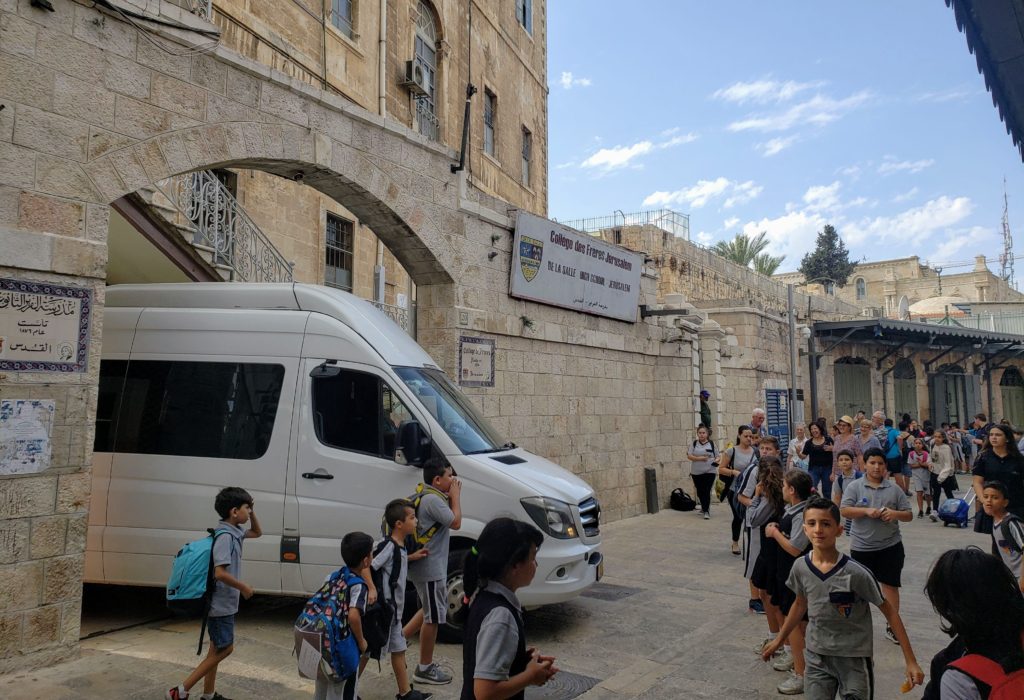
From Jaffa gate heading west toward the new part of the city then following the wall around to the north you will come upon New Gate, built in 1889 to provide direct access to/ from the Christian Quarter. Unlike the other gates it doesn’t have any architectural components or gate like structures hence I don’t have a photo of it. Just inside the gate we came upon a lot of children, loud and excited! There was a school right inside the gate and it was home-time when we walked past. This is in the Christian quarter.
Continuing down the hill heading north you get to what is the most stunning of the gates, Damascus Gate.
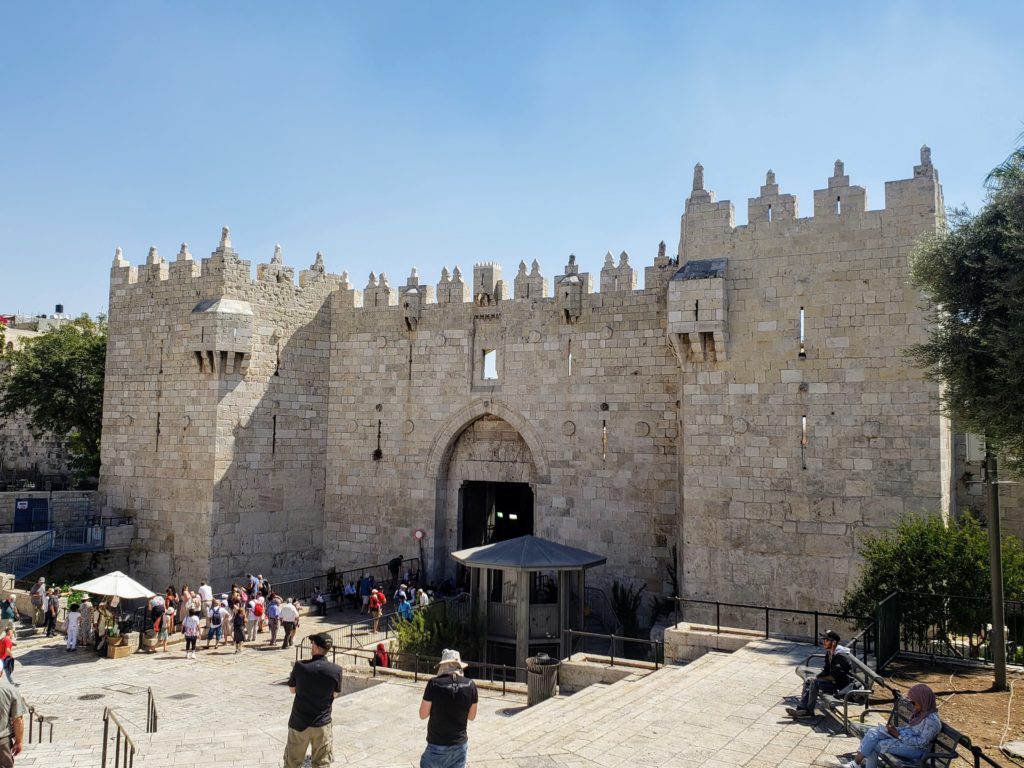
The current Damascus Gate was built in 1537, but remains of a second century CE gate can be seen underneath the current one. The gate has towers on either side of it and to enter you descend stairs (rather than ascend like Jaffa gate). Through the gate and you’re into the market on the edge of the Muslim Quarter of the Old City. Outside it is an Arab/ Muslim area that prior to 1967 was Jordan, not Israel. Palestinian buses ran to and from here to our part of town but also to towns we visited in Palestine (Bethelehem and Ramallah) and our favourite cheap eat was just across the busy road from this gate. More on this area in my Muslim Jerusalem post.
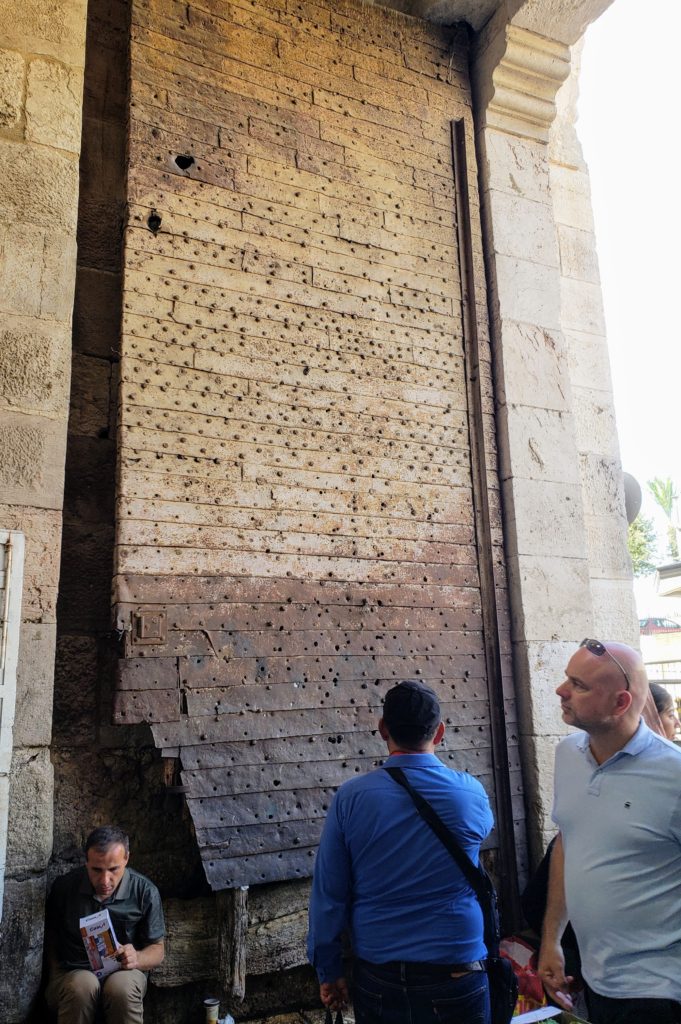
Tall Old Door, Damascus Gate 
Entering Damascus Gate
Carrying on around the wall to the east we reach Herod’s Gate aka Flowers Gate. We passed it on our walk to the Mount of Olives but didn’t go through it and I didn’t get a photo. It is also a newer gate, built in 1875 to give greater access for those in the Muslim Quarter to the new neighbourhoods springing up outside the City walls.
Turning a corner to the East, you first come upon Lion’s Gate (pictured at the top of my second Christian Jerusalem post) then Eastern Gate or Golden Gate which is closed up. When it was open, this gate opened onto the Temple Mount. Muslims and Christians generally believe this was the gate Jesus entered the city through. The current gate was built around 520 CE, sealed by Muslims in 810, reopened by the Crusaders in 1102 then walled up by Saladin in 1187. The busy Sultan Suleiman rebuilt it with the city walls but then walled up the gate in 1541 and it has stayed that way since.
Turning the corner of the Temple Mount we get to the south side of the Old City and my favourite named gate – Dung Gate- another 16th century creation and the one right by the entrance to the Western Wall. We ran through here once, running late for our tour in the City of David which is outside the current Old City. No time for photos! Beside Dung Gate was the Tanner’s Gate which we didn’t see.
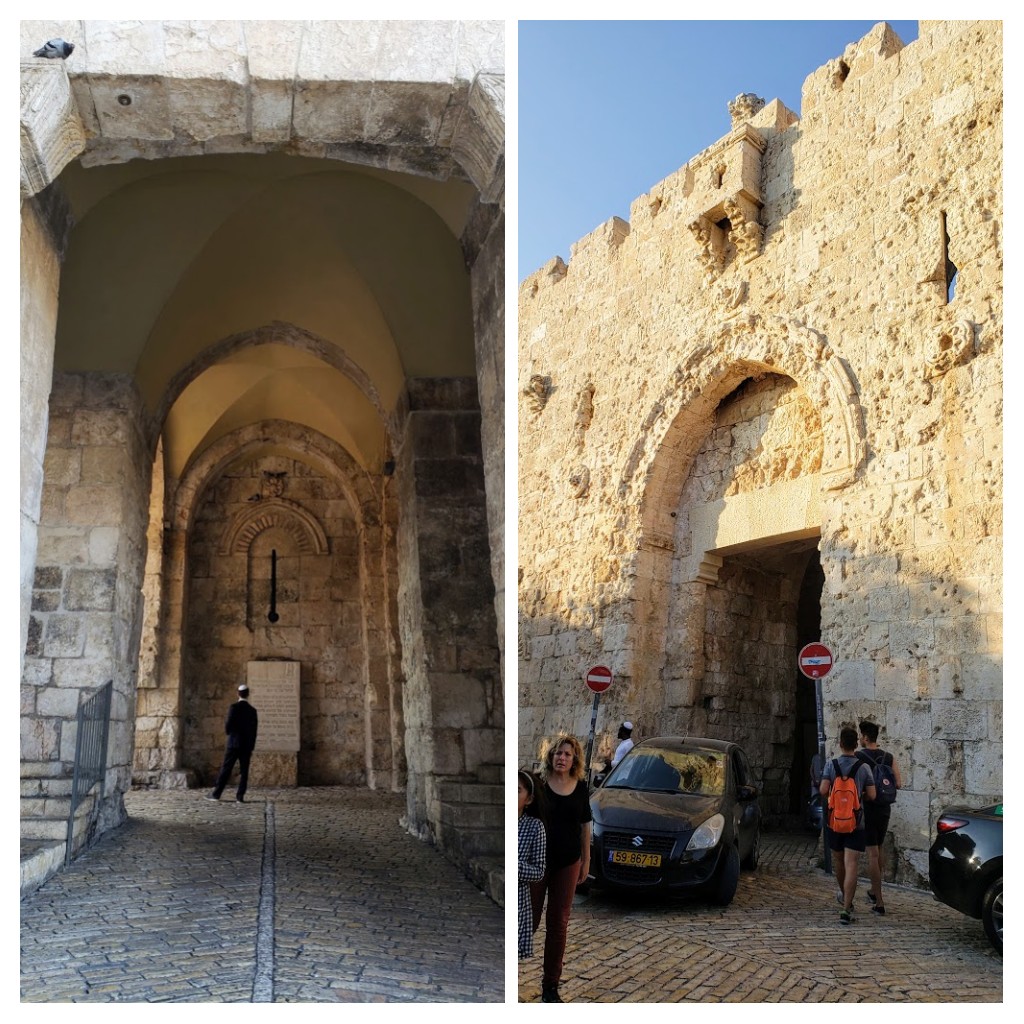
Now to finish off our tour of the Old City’s gates we get to the first gate we visited; Zion Gate also known as King David’s gate, as Mt Zion is right outside this gate and that’s where King David is also buried. This gate was built in 1540 – another of the Turkish Sultan Suleiman’s creations. It is an L shape so you walk in a few metres then have to turn 90 degrees to carry on. It leads to the Jewish quarter of the city. You can see in the picture below all the bullet marks on the wall around the gate – from the 1948 Israeli War of Independence when the Jewish fighters tried to take the Jewish quarter from the Arab forces. They succeeded briefly only for it to then be occupied by Jordan and the gate closed until 1967 when Israel retook the city.
Righto that’s the round up of the Gates!
